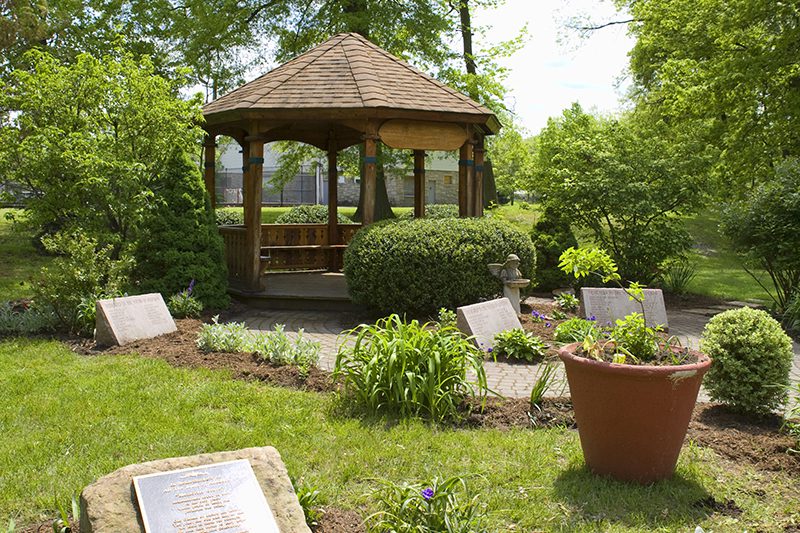There’s an old Chinese proverb that says, “If you want to be happy for a lifetime, be a gardener.” Our Sunset View Cemetery & Mortuary staff wants to give this sentiment a new twist by saying, “If you want help healing after a loss, be a gardener.”
In our own lives and through hearing stories from others, our compassionate team understands the healing that can occur through planting and curating a memorial garden in honor of a loved one who has died. Not only is this an inspirational way to pay tribute to their life, but it also provides a peaceful place to remember how much they meant to you.
 It’s a great time for El Cerrito, Oakland, and Berkeley residents to think about how and where you can create a meaningful destination to retreat to when working through your grief. Planning, building, and maintaining a garden also presents an opportunity to focus on something beautiful and symbolic in the midst of what may be a painful time in your life. After all, a personal grief journey is difficult to explain to others. It’s unpredictable and filled with setbacks and breakthroughs. The hope is, over time, feelings of peace, connection, and positivity will slowly reemerge.
It’s a great time for El Cerrito, Oakland, and Berkeley residents to think about how and where you can create a meaningful destination to retreat to when working through your grief. Planning, building, and maintaining a garden also presents an opportunity to focus on something beautiful and symbolic in the midst of what may be a painful time in your life. After all, a personal grief journey is difficult to explain to others. It’s unpredictable and filled with setbacks and breakthroughs. The hope is, over time, feelings of peace, connection, and positivity will slowly reemerge.
In many ways, a memorial garden can help in that process. Consider these ideas when thinking about planting a garden in honor of someone you loved and lost.
- Depending on space, your memorial could be as small as a single tree or as large as a sprawling garden with many different flowers, grasses, and shrubs. Did your friend or family member have a favorite flower or plant? Perhaps they loved tulips, daffodils, or lilacs. You can select plantings based on what meant the most to them.
- What was your loved one’s favorite color, fragrance, or herb? Picture a tribute of cheerful, multi-color tulips, a lilac bush with its intense scent and stunning blooms, or an edible element featuring a simple pot of basil, mint, or cilantro.
- If your garden is in honor of your spouse or partner, bleeding hearts grow well in California, as do knock out roses, and breathtaking black-eyed Susans.
- Was your loved one a veteran? Think about planting white, red, and blue (or dark purple) flowers, such as poppies, peonies, irises, and delphiniums.
- Consider the meaning behind particular trees and flowers. An oak tree is a symbol of power, courage, and strength. A birch tree represents new beginnings. The astilbe flower is said to mean “I will be waiting for you,” symbolizing patience and dedication to a loved one. Calla lilies are a traditional symbol of marriage also used to celebrate major transitions in life. Even the act of researching these meanings and symbols can aid in the healing process as this might help bring to mind special memories.
- Think about the addition of meaningful statuary or hardware. Did your loved one enjoy watching the birds come and go? A small bird statue or birdbath will bring a smile throughout the seasons. Add a bench, water feature, or even a funny or whimsical sign (“Gardeners know all the dirt”), statue, or tree hanger as a nod to their interests or sense of humor.
- If you live in an apartment or your yard is small, no problem. You can still create a memorial using perennials that you can move indoors come fall. Or purchase a special potted plant to display in a prominent location inside.
The details of the garden – what you plant and where it’s located – matter less than the meaning behind it. You want to create a space that holds a special place in your heart, bringing you joy and helping you heal as days go by.
If you’re feeling “stuck” in your grief, check out our Guiding Grief Interactive Online Help for answers to many questions about grief and suggestions for your own healing.
Losing a loved one changes life as you know it, but a “new normal” is possible. No matter where you are on your grief journey, remember we’re always here for you for support.

 Send Flowers
Send Flowers

No Responses to “ Creating a Memorial Garden Helps in Healing After a Loss ”